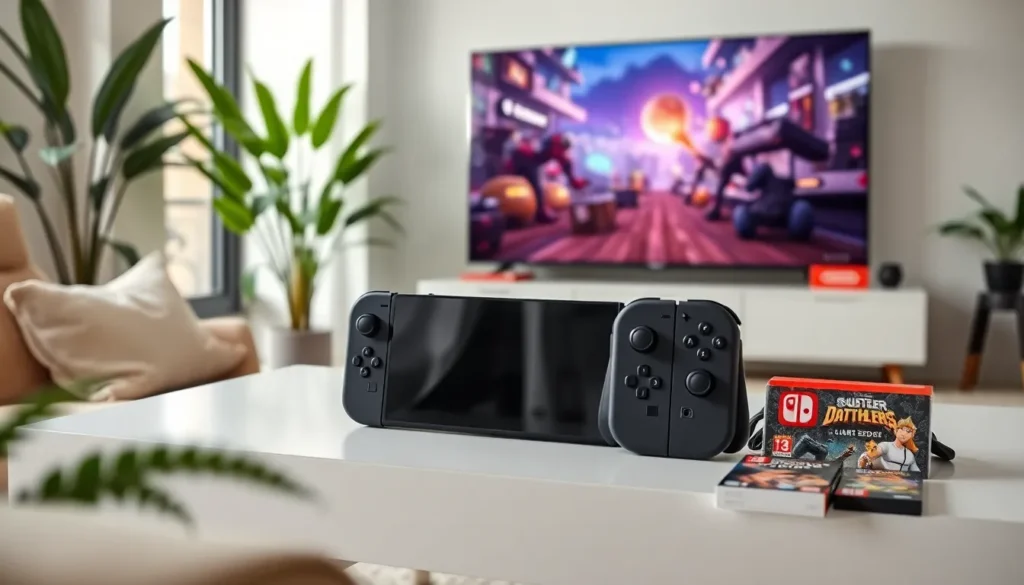Table of Contents
ToggleIn the chaotic world of Super Smash Bros, where friends become foes and items fly faster than a speeding bullet, having a solid ruleset is crucial. Without it, matches can devolve into a wild free-for-all that leaves players confused and friendships in tatters. Who knew that a simple game could spark such intense debates over whether items should be on or off?
Overview of Smash Bros Ruleset
A clear ruleset in Super Smash Bros promotes structured gameplay and enhances player experience. Players understand match expectations better, reducing misunderstandings and potential conflicts.
Importance of Rulesets in Competitive Play
Competitive play relies heavily on consistent rulesets. Establishing guidelines helps players engage in fair matches. Without them, gameplay can devolve into chaos, leading to frustration. A well-defined ruleset creates an environment where skill and strategy take precedence. Additionally, clarity in rules fosters a sense of sportsmanship among competitors.
Key Components of Smash Bros Ruleset
Several key components define the Smash Bros ruleset. Stage selection impacts the game’s flow and strategy, while time limits set for matches ensure timely conclusions. Stock count reflects the number of lives each player has, influencing tactics throughout the match. Items usage varies across tournaments, with some opting for no items to prioritize competitive integrity. Restrictions on character selection may apply, emphasizing balance in matchups.
Common Rule Variations

Variations in rules can enhance gameplay experience in Super Smash Bros. Specific rule sets often address common preferences among players.
Stock vs. Time Matches
Stock matches typically involve a set number of lives, encouraging strategic play and careful management. Players enjoy the challenge of staying alive as long as possible. Time matches, on the other hand, impose a time limit, focusing on scoring points by defeating opponents within that timeframe. Matches can end in a sudden death if scores tie at the end of the timer. Both formats provide unique experiences, allowing players to choose based on their preferred style of competition.
Stage Selection Protocols
Stage selection plays a critical role in shaping match dynamics. Players can opt for random stage selection or follow a list of agreed-upon stages. Competitive play often uses neutral stages to ensure fairness and consistency. Players may also discuss counterpick stages, which can give one player a strategic advantage. Polite etiquette typically governs stage selection discussions, ensuring everyone agrees before the match starts. Proper protocols enhance the gaming experience while minimizing disputes.
Legal Stages in Tournament Play
Legal stages play a pivotal role in tournament settings for Super Smash Bros. Selecting the right stage can significantly impact gameplay dynamics, so awareness of commonly accepted stages is essential.
List of Frequently Used Stages
Battlefield remains a top choice due to its balanced layout and three platforms. Final Destination, known for its simplicity, provides a flat surface without platforms, appealing to many competitive players. Smashville features a moving platform, adding a layer of strategy to matches. Yoshi’s Island offers unique terrain and platform placements. Town and City, with its rotating platforms, enhances match versatility.
Banned and Controversial Stages
Some stages garner bans due to their potential for unfair advantages. Items on Big Blue can lead to chaotic gameplay that disrupts strategic movements. Mute City is often deemed controversial because of its moving hazards that create unpredictable outcomes. The combination of hazards and aesthetics on Waluigi’s Stadium often raises questions about fairness in competitive play. Players frequently debate the viability of these stages, reflecting the complexity of stage selection in tournaments.
Character Restrictions
Character selection impacts gameplay significantly in Super Smash Bros. Defined character restrictions ensure a balanced competitive environment for all participants.
Tier Lists and Their Impact
Tier lists categorize characters based on their effectiveness in competitive play. Players often reference these lists to determine which characters provide the best advantages. Competitive circuits usually highlight top-tier characters, influencing player choices and creating a strategic layer within matches. Meta shifts occur frequently, affecting character rankings and player strategies alike. As players adapt to the evolving metagame, personal playstyles also play a crucial role, making tier lists both a guide and a flexible tool.
Why Character Selection Matters
Choosing the right character influences match outcomes drastically. Different characters possess unique abilities, strengths, and weaknesses. Selecting a character that complements a player’s strategy enhances the chance of winning in competitive settings. Character restrictions prevent dominance by any single character, fostering a diverse range of playstyles. Limited character choices encourage creativity, forcing players to master multiple options to adapt to various opponents. Balancing character selection maintains the integrity of competitions, providing an exciting and fair gaming experience.
The Role of Items
Items play a contentious role in Super Smash Bros gameplay, influencing match dynamics. Their inclusion can dramatically change strategy and player interactions.
Item Usage in Competitive Play
Item usage in competitive play varies based on tournament rules. Some tournaments allow items while others ban them entirely. When items are allowed, players must adapt their strategies. Players could utilize items to gain a significant advantage against opponents. Different items provide unique effects, such as healing or increasing attack power, which can shift momentum in battles. Knowing the item spawn locations and timing is crucial for optimizing gameplay.
Arguments for and Against Items
Arguments supporting item usage often highlight the increased chaos and unpredictability they bring. Some players enjoy enhanced excitement and engagement with items. They argue that items level the playing field by introducing new mechanics. Conversely, opponents assert that items can create imbalance, favoring random luck over skill. Some competitive players prefer a more structured environment, where character skills and strategies dominate the outcome. Resisting the randomness of items promotes a purer form of competition, emphasizing player choices over external factors.
A well-defined ruleset is essential for an enjoyable and competitive Super Smash Bros experience. By establishing clear guidelines for gameplay elements such as stage selection and character restrictions, players can focus on skill and strategy rather than confusion and chaos.
The ongoing debates around item usage further highlight the need for consensus among players to ensure fair competition. Ultimately, a structured environment enhances sportsmanship and fosters creativity, making every match a thrilling showcase of talent. Embracing these rules not only elevates gameplay but also strengthens the community, allowing friendships to flourish alongside fierce competition.




